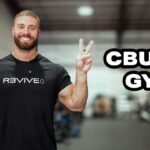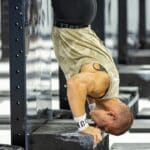Working out your arms is underrated. Nobody ever gets excited about arms day in the gym! And nobody ever calls out someone else’s “chicken arms”. But sometimes arms can fall by the wayside while we’re busy focusing on bigger muscles.
If you’re serious about building a serious set of arms, it’s important to target all the muscles in the biceps and triceps. Which is why we’ve put together this list of long-head bicep exercises. Get these right, and you’ll start to sculpt an admirable set of bis!
Jump to:
- What Is the Long Head of the Bicep?
- What Are the Benefits of Doing Long Head Bicep Exercises?
- How Can You Isolate the Long Head Of the Bicep?
- 9 Best Exercises to Target Your Long Head Bicep
- 4 Compound Exercises That Target the Long Head Bicep
- Tips for Working Out Your Biceps
- Avoiding Injury When Training Your Biceps
What Is the Long Head of the Bicep?
The bicep (also called the biceps brachii muscle) is made up of two different muscles: the long head and the short head.
The long head is the muscle that forms the “peak” you see when you flex. It’s the bigger and more noticeable of the two bicep muscles, also giving your bicep a more lengthy appearance.
Interestingly, the short head is what forms the foundation that allows the long head to be so visible. It’s actually often the more worked-out of the two muscles, which means the long-head muscle gets left behind on occasion.
Based on our testing, this is the best creatine for most people. It has the perfect dosage of creatine monohydrate per serving, which has been proven to increase muscle mass.
- Promote strength and muscle gains
- Tested for purity and safety
- Creatine has no known side effects
It’s important to work on both the long and short head of the biceps if you want to build a dynamite set of arms.
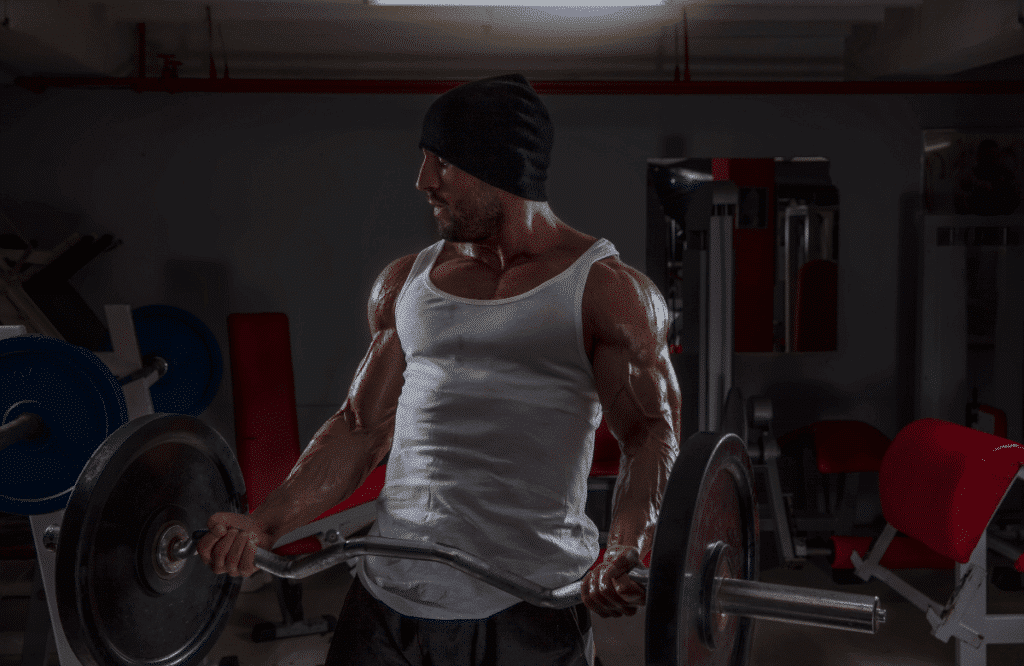
What Are the Benefits of Doing Long Head Bicep Exercises?
Doing exercises that specifically focus on the long head of the bicep will ensure that you develop the most muscle growth. If you neglect this part of the bicep, you might find yourself frustrated at your lack of sculpted biceps.
Understanding how to target the long head of your bicep also means you have an opportunity to work on your mind-muscle connection. Don’t discount this! That connection is valuable and can actually help you maximize gains.
There’s a chance for you to improve your range of motion as many of these long head bicep exercises have you starting with your elbows behind your body. Your arm will end up moving through a wider range of motion, which also improves strength, as long as you’re doing it with great form.
Also, the stronger your long head, the more it’s able to keep your humerus stable during movement, reducing your chance of injury.
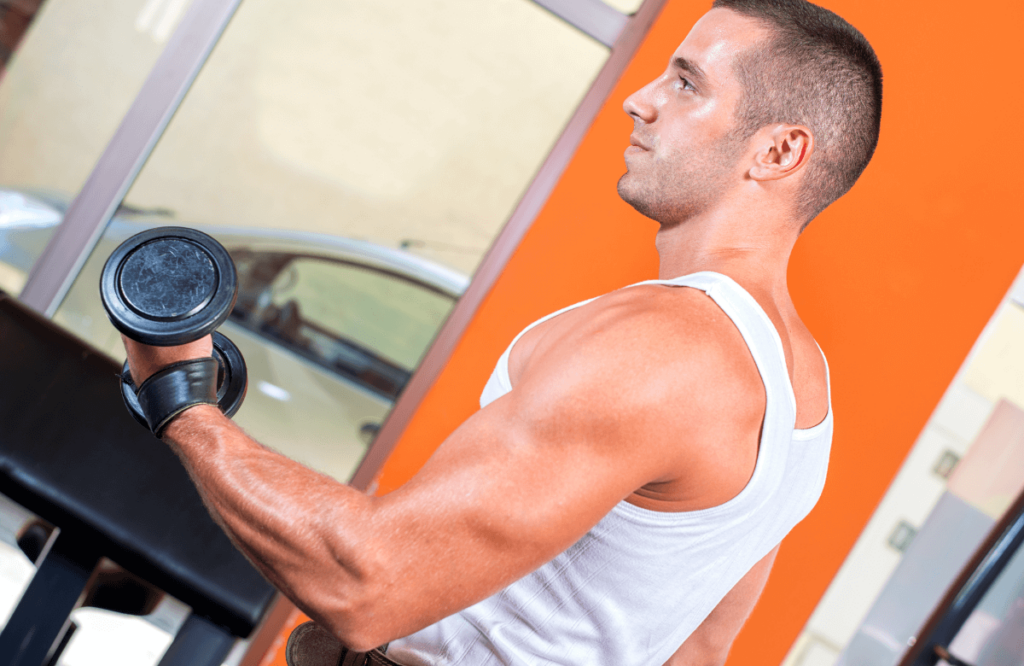
How Can You Isolate the Long Head Of the Bicep?
It’s important to note that you can’t actually isolate the long head. With each of these exercises, the short head will also get some activation. However, certain exercises place more emphasis on the long head, which is the important thing here.
Exercise selection is important. But the key factor in emphasizing muscle activation of the long head is focusing on training variables like your arm and grip position and your grip width. Let’s dig into those a little more.
Width of Your Grip
There are two parts to this: where you hold the barbell, and how you hold your arms, in other words, your forearm position.
A closer grip (with your hands closer together on the barbell) will target the long head more specifically. It becomes important here to hold your arms correctly too in order to get the best activation.
When the forearm is angled across the body, the long head is targeted more specifically. So make sure you keep your elbows at your sides instead of bringing them in front of your body for the movement.
Neutral or Pronated Grip
Another excellent way to get the long head bicep working is to use a neutral or a pronated grip. A neutral grip (hammer grip) can be used when you’re doing dumbbell exercises, and a pronated grip (palms down) when using a barbell.
One of the functions of the bicep muscles is to facilitate supination, the movement of turning your palm upwards. The underhand grip might seem like a more natural position for a bicep curl (the weight rests in the palm of the hand and doesn’t need to be “held”), but simply turning your hand over, palms down, can make a big difference in targeting the LH.
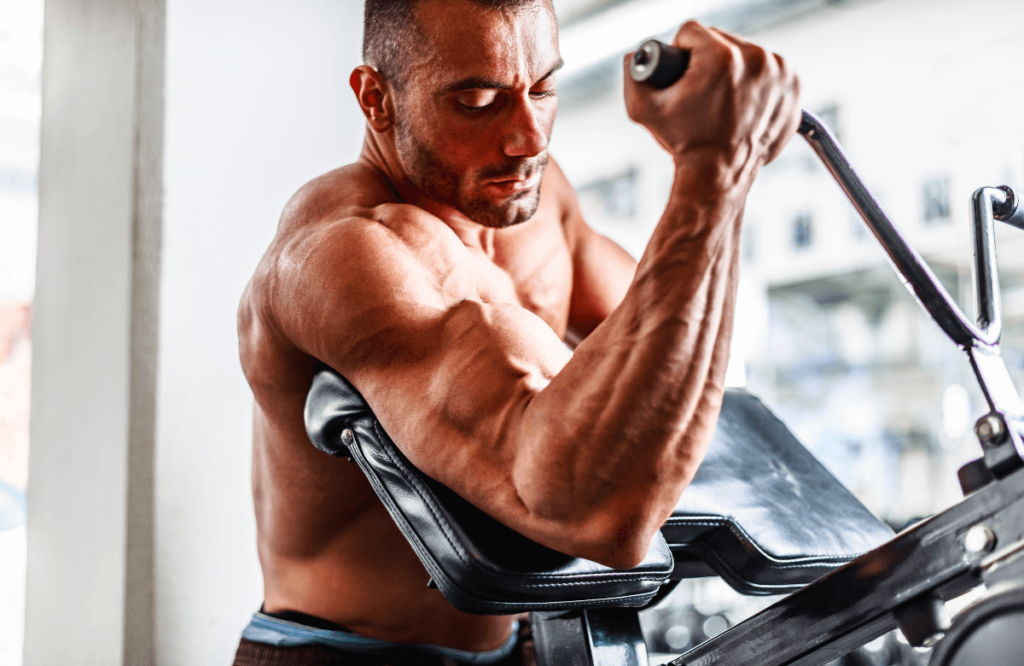
Arm Position
When the biceps are placed in a position that requires more stretch, the long head is more easily activated. So keeping your arms in front of your body (in other words, anchoring the elbow on the hip bone, as is common) actually activates the short head more.
Bringing the elbows back behind the body helps to really work the long head. This is because the long head of the bicep attaches closer to the shoulder, so allowing your arms full stretch activates that particular area of the arm more, so work on your elbow position if you want to target it.
This is obviously going to be more practical during dumbbell workouts. Lying on an inclined bench will allow you to really get those arms into a stretched position and target the right place.
Based on our testing, this is the best creatine for most people. It has the perfect dosage of creatine monohydrate per serving, which has been proven to increase muscle mass.
- Promote strength and muscle gains
- Tested for purity and safety
- Creatine has no known side effects

9 Best Exercises to Target Your Long Head Bicep
So, let’s get into the best long head bicep exercises to really sculpt that bicep peak! Add these (or a variety of them) to your arm workout, and you’ll see results.
1. Drag Curl
Drag curls are a unique twist on the usual bicep curl. The way they’re performed reduces momentum, so it’s pretty hard to swing the barbell or dumbbell up on this one.
These curls take the deltoid muscle out of the equation, so your biceps really get no added help with lifting the weight. The long head activates pretty strongly to lift the weight, and weights that feel light with normal curls feel a lot heavier this way!
They’re easier to do with a barbell than with dumbbells, but both are an excellent long head biceps exercise option, depending on what you have available or what you prefer.
How to Do It:
Hold your barbell/dumbbells with a normal supinated grip and stand with your feet about shoulder-width apart. Curl your arms upwards until your hands are at chest height, making a concerted effort to keep the barbell or dumbbell as close to your body as possible (not out in front of your body like usual).
Your elbows will naturally jut out behind you, but this is exactly what you want, because it will really engage that long head.
Do the movement slowly and in a controlled manner, pausing for a second at the top before bringing it back down. Make sure to extend your arms fully at the bottom of the movement for max effectiveness.
You can also try cable drag curls if you prefer. Cable exercises tend to increase your muscles’ time under tension, which can help with muscle growth.
2. Incline Dumbbell Curls
Incline dumbbell curls are the perfect full-extension bicep exercise. The elbow moves behind the body and leaves your long head no choice but to engage in order to do the movement.
You can actually substitute your normal bicep curls for the incline curl. They’re more challenging, so you might need to lower the weight a touch, but they’re superb for building great peaks.
How to Do It:
Set a bench at a decent incline and lie back on it while holding your dumbbells with a normal supinated grip. Allow your arms to straighten fully. This is your starting position.
Curl the dumbbells up, bending at the elbow. It’s important to try and keep the upper arm as still as possible. No swinging or moving them forward to bring the dumbbell up more!
3. Hammer Curl
You’ll most likely need to use dumbbells for this exercise, unless you have a tri-bar. This is the best exercise for that neutral grip, which naturally activates the long head more than the short head.
You should be able to use the same kind of weight you’d use for a normal bicep curl. Make sure you can lift and lower the weight with perfect form, though!
How to Do It:
You can do this exercise in a standing position or seated on an incline bench (although obviously only with dumbbells if you’re seated). Doing it seated allows you to get that full arm extension.
It’s just the same as a normal curl, only holding the bar or dumbbells differently. The motion is the same, though—bend at the elbow, keep your upper arm as still as possible, no swinging!
Whichever way you choose to do it, make sure you’re controlled and lifting with proper form. Hold it for a second at the top, and lower it slowly. Remember, muscle is built on the descent too.
4. Reverse Curl
Reverse curls take advantage of the pronated grip, placing the engagement much more on the long head than the short head. Be aware, though, that the forearms are also strongly engaged in this movement.
If you’ve got weaker forearms, you might need to lower the weight a little in order to perform this exercise for the required reps. It’s often easier with a barbell.
How to Do It:
Hold your barbell with an overhand grip. Hinge at the elbow, bringing the barbell up until you feel it in the bicep. Hold for a second at the top and lower it slowly back down.
You can also use an EZ curl bar for this exercise, but make sure to grip it with your thumbs higher than your pinky fingers.
5. Bayesian Cable Curls
This is a cable bicep exercise that’s well worth adding into your routine. It’s an excellent choice, because it keeps the bicep under constant tension throughout the whole range of motion.
You’ll need a cable machine, so you may not be able to do these cable curls if you work out at home with only free weights.
How to Do It:
Set up the cable machine with the handle at the bottom pulley. Stand with your back to it and your arm extended out behind you, holding the handle. Initiate elbow flexion, contracting your bicep and curling the cable up towards you.
Try not to bring your elbow forward. Keeping it behind you will activate the long head more effectively. Keep in mind that number of stabilizing muscles will come into play also, so you may feel it in your shoulders and chest too.
6. Concentration Curls
Concentration curls allow you to place all the emphasis on the bicep heads, removing any stabilizing muscles by leaning your arms against your own leg. It effectively isolates the biceps muscles and really works on that mind-muscle connection.
How to Do It:
Sit on a bench or a different surface where your thighs can be at a 90-degree angle to the floor. Hold a dumbbell in one hand and let your hang hang down in between your knees.
Rest your upper arm against the inside of the thigh on the same side. This is your anchor point. Keeping your upper arm stable, hinge at the elbow and contract your bicep muscle to lift the weight.
Hold it for a second at the top, and then release and lower your arm in a controlled manner, back to the beginning. Switch arms and do the same number of reps on that side.
7. Alternating Dumbbell Curls
This exercise is a classic. It involves both a supinated grip and flexion at the elbows, both of which help to target that long head.
The alternating nature of the exercise also means you can place all your focus on one muscle at a time, emphasizing that connection between mind and muscle.
How to Do It:
Stand with your feet shoulder-width apart in a comfortable stance, holding the dumbbells at your sides with a normal , overhand grip. One hand at a time, contract your bicep and lift the weight, turning your arm so your wrist is facing upwards at the top of the movement.
Lower it slowly and easily, then do the same on the other side. Place your attention on the bicep muscle as you’re lifting for a better pump.
8. Narrow-Grip Barbell Curls
A closer grip causes your forearms to be in a slightly turned-in position, better activating the long head of the bicep.
It’s an excellent variation to add to your routine, especially if you prefer using the barbell over dumbbells. You can also use the EZ bar if you prefer—it could make hand placement easier.
How to Do It:
Grip the barbell with a narrow grip, your hands close to touching. Your elbows should be at your sides, rather than resting on your hips.
Tighten the biceps and raise the bar to your chest level. Hold for a second, then lower it back to the starting position.
9. Preacher Curl
You’ll need to find a preacher curl bench for this exercise, but it’s a great way to really hone in on those long head muscles. You can use a normal barbell or an EZ bar, although we recommend the EZ bar for better grip. You can also do a dumbbell preacher curl if you want to.
How to Do It:
Grab an EZ bar and hold it with an underhanded, close grip. Sit on the preacher bench, with your triceps on the pad. Straighten your arms until they’re as straight as they can be.
Flex your biceps and lift the weight until your forearms are at 90 degrees to the ground. Lower it in a controlled manner, remembering that the descent is as important as the flex for muscle-building!
4 Compound Exercises That Target the Long Head Bicep
Bicep-specific exercises aren’t the only ones that can target those long heads. These 4 compound exercises do an excellent job of really engaging the long head of the bicep, so include these where you can for building great biceps peaks with some muscle mass behind them!
Zottman Curl
You’ll need a set of dumbbells for these curls. Start with your hands at your sides, palms facing inwards. Raise the dumbbells in a normal curl, but when you get to the top, rotate your wrists so you’re now using an overhand grip.
Lower them this way—like a reverse curl—and once you’re at the bottom, rotate them back to the starting position.
Chin-Ups
Chin-ups are an excellent compound exercise that happens to engage the long head of the bicep quite nicely. You can use just your own body weight, or add a weighted vest if it’s not heavy enough for you.
Conversely, if it’s too light for you, you can use a resistance band to help you lift your own body weight. Make sure to extend your arms as fully as you can at the bottom of the movement for the widest range of motion.
Diamond Push-Up
Diamond push-ups take advantage of that inward angle of the arms, targeting the long head more specifically. Make sure you’re doing them with the right form to prevent injury!
Underhand Grip Inverted Row
This movement requires you to really drive the elbows backwards, so if you make sure to squeeze those biceps, you’ll be working on the long head during your back day as well.
Tips for Working Out Your Biceps
Don’t assume that working out your biceps is easy. You still need to pay attention, work on that mind-muscle connection, and do each movement properly.
Focus On Your Form
Form is everything. It doesn’t matter which exercise you’re doing—doing it with excellent form is the only way you should be performing it.
Focus on performing the movement in a controlled way, moving through the full range of motion, and concentrating on how the muscle is moving.
This is the place where many people go wrong. If you can’t do the movement for at least 4 reps with perfect form, then you’re lifting too heavy. Don’t do half a job when it comes to form!
Don’t Swing
One of the biggest mistakes people make with bicep exercises is to swing their arms upwards instead of raising the weight with calm control.
Swinging your arms not only disengages the bicep muscle to an extent, but it also places extra strain on your joints. You’re far more likely to injure yourself if you swing from the elbow or shoulder instead of doing it properly.
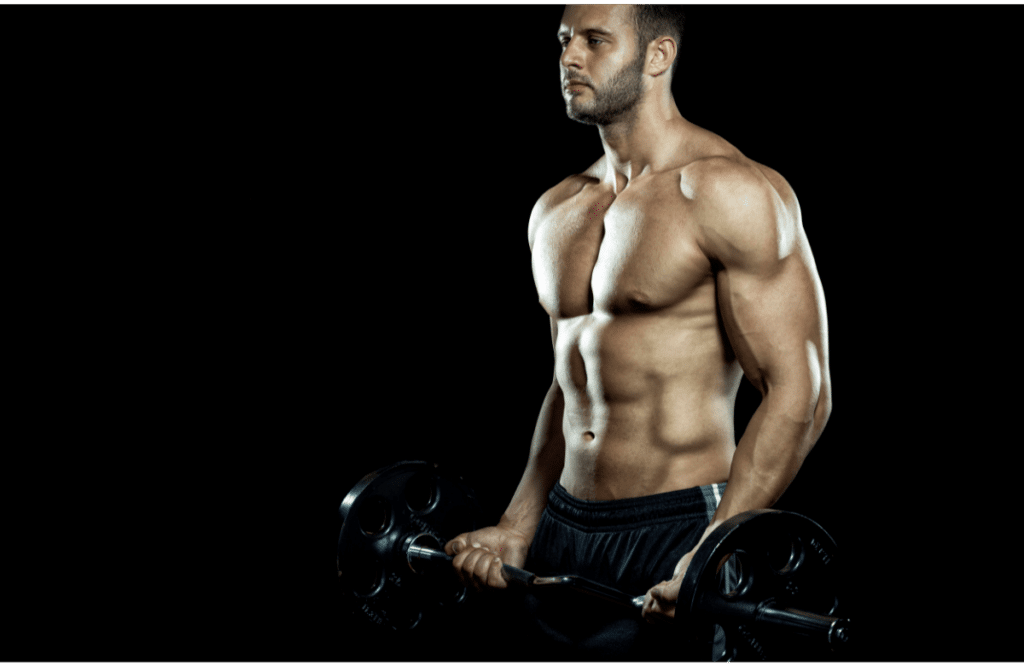
Utilize a Full Range of Motion
Doing half reps is selling yourself short. If you want to build amazing biceps, you need to move through the entire range of motion of the exercise.
This does make the exercise harder, because it requires more strength to contract the muscle and lift the weight.
That means your bicep will be getting a better workout, but it also means you might need to lower your weight a little in order to get the full range of motion out of it.
Increase the Weight Gradually
There’s no need to rush to increase your weight. Ego and injury go hand in hand! Work on increasing your weight gradually as you grow stronger. If that means sticking with the same weight for a few weeks or even months, then so be it.
Only up the weight once you can reach the required number of reps with perfect form. If you’re losing your form halfway through your set, you’re lifting too heavy and doing yourself a disservice.
Incorporate Active Recovery
Active recovery is a great way to get a bit more exercise while not specifically targeting your biceps. Incorporating exercises like running, rowing, jumping rope, or other forms of cross-training can work the biceps lightly while keeping you active.
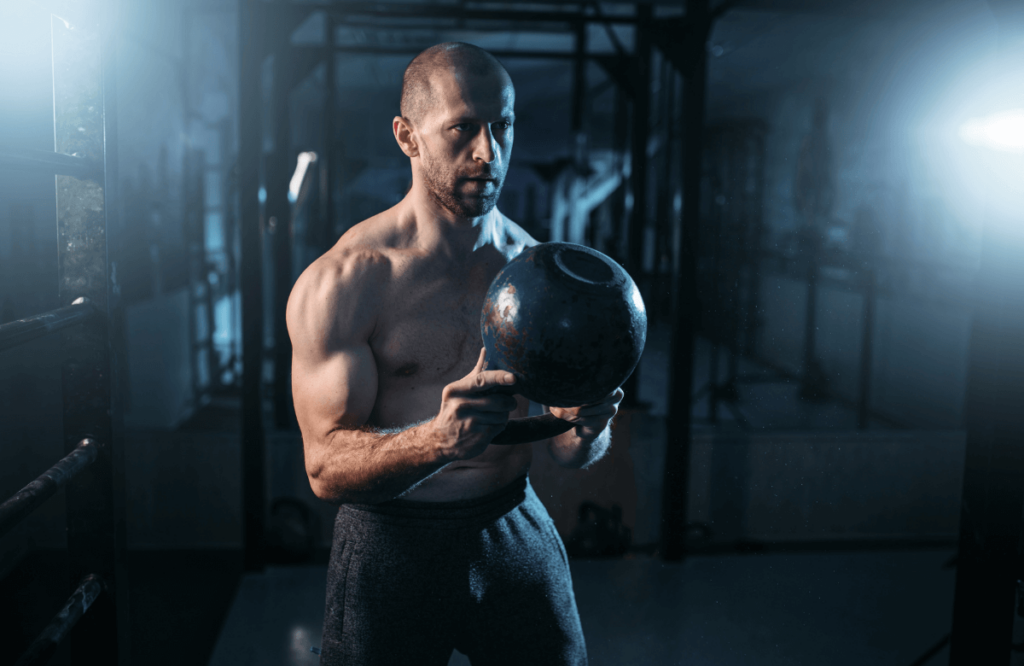
Avoiding Injury When Training Your Biceps
A bicep injury can set you back for a few weeks as it heals. The best way to avoid that is to follow the tips below!
Warm Up Properly
Don’t think that because the bicep is a smaller muscle, you don’t need to warm it up. Like any muscle, it should be warm and supple before you start lifting heavy weight with it.
The best way to warm up is to do some dynamic stretches and do 3 warm-up sets of your first exercise. This should be at about 60% of your maximum weight, which will prime your biceps for the movement and get those muscles warm.
Keep the Shoulders & Elbow Locked
The quickest way to injure yourself when training biceps is to swing from your shoulder or elbow.
Pay particular attention to locking your shoulder joint and elbow joint in place. Your shoulder shouldn’t move at all; your elbow should only hinge, but should be anchored in one place.
Focus hard on lifting the weight by contracting your bicep muscles. You shouldn’t be swinging your shoulder or elbow to get the weight up, otherwise the movement isn’t working your bicep as much as you think!
When doing curls, anchor your elbow against your side. Relax your shoulder and focus on only moving the lower half of your arm.
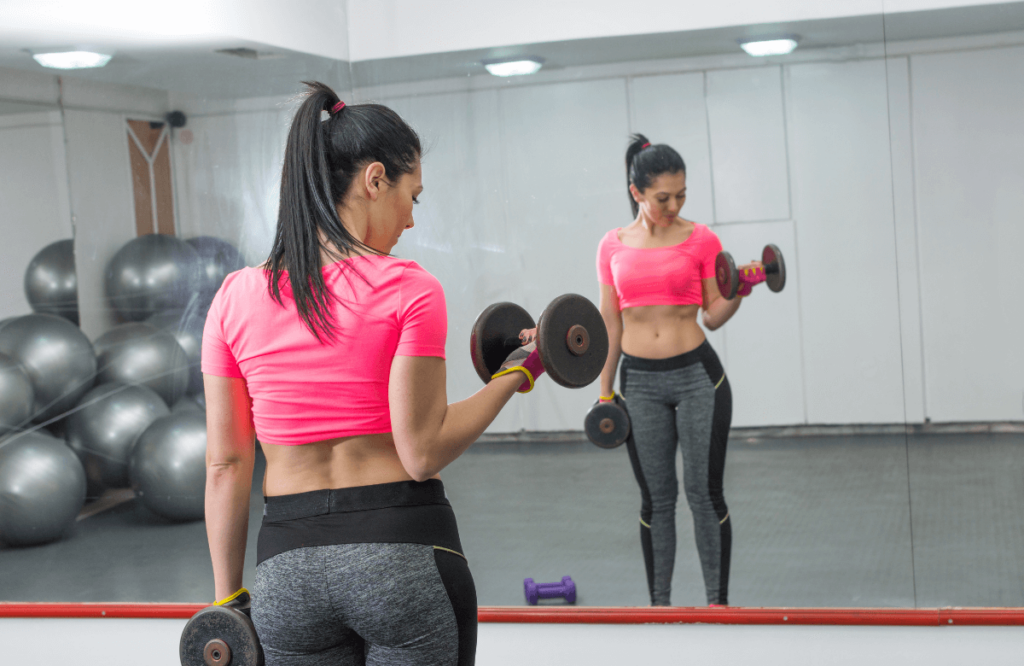
Lift the Right Weight for Your Level
There’s no room for showing off in the gym… Unless you want to get injured! Make sure you’re lifting the right amount of weight for your ability level and not overdoing it.
Here’s a guide. Men should aim for 4 to 6 reps with perfect form. If you can’t get 4 reps yet, lower the weight until you can. Work with that weight until you can do 6 reps with perfect form. Then, move up to a new weight… That you can do 4 reps with. And so on.
For women, the optimal range of 8 to 10 reps, with the same sort of progression. The most important thing here is perfect form! The moment you start losing your form, it’s a sign that you shouldn’t be lifting more weight than that.
Stop If You Feel Pain
This isn’t just a bicep thing! If you feel pain at any time going through an exercise, it’s wise to stop. Then, you can analyze the cause of your pain.
Is it just DOMS from your pull-ups yesterday? Or did it feel like something tore, popped, or pulled? If you know it’s just DOMS or stiffness from everyday life, then by all means, continue—but warm up properly and don’t overdo it. Your muscles may be more prone to injury.
If the pain is new or popped up suddenly, it may be best to avoid any movement that aggravates it. You can try a different bicep exercise, but if the pain persists then it’s best to get it checked out by a medical professional.
Don’t mess around with pain—it’s a sign that something isn’t right. Get it checked out and rest the muscles when necessary. If you don’t, you could do way worse damage in the end.












